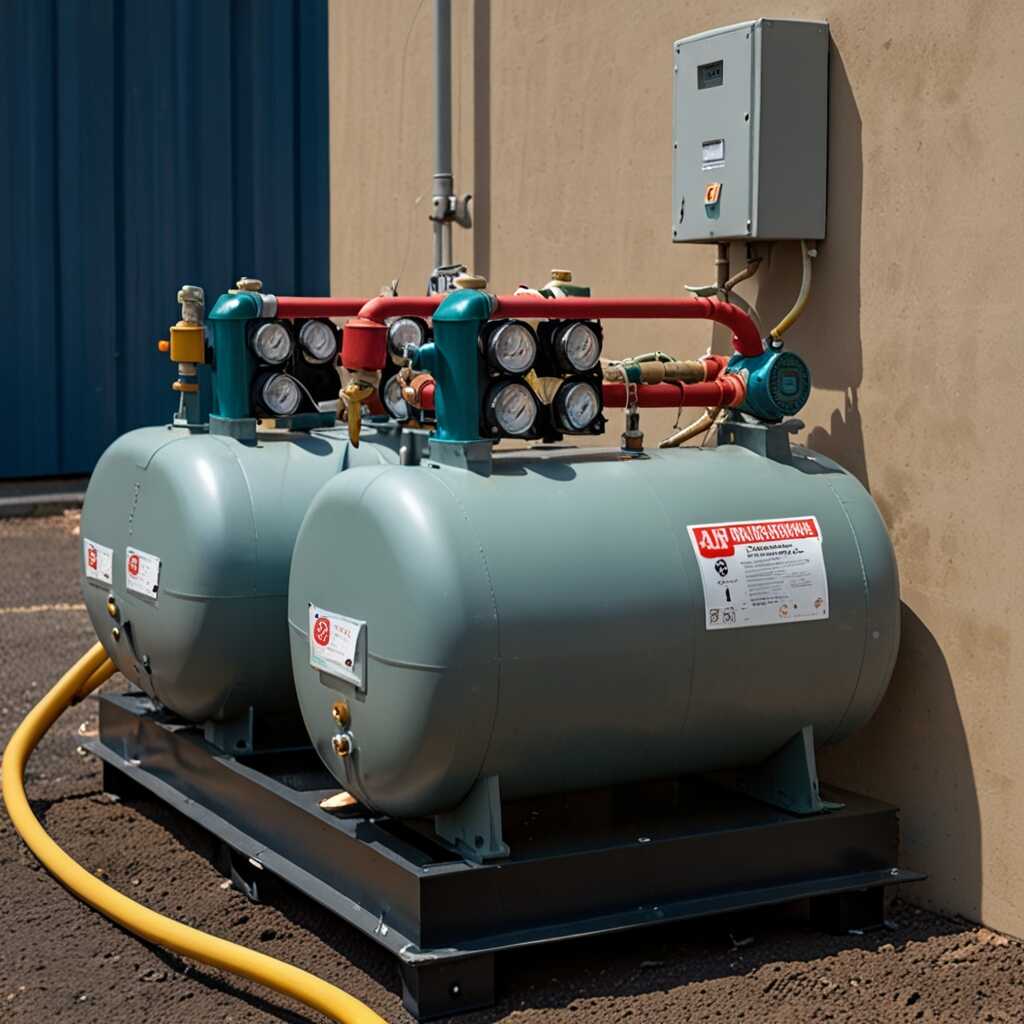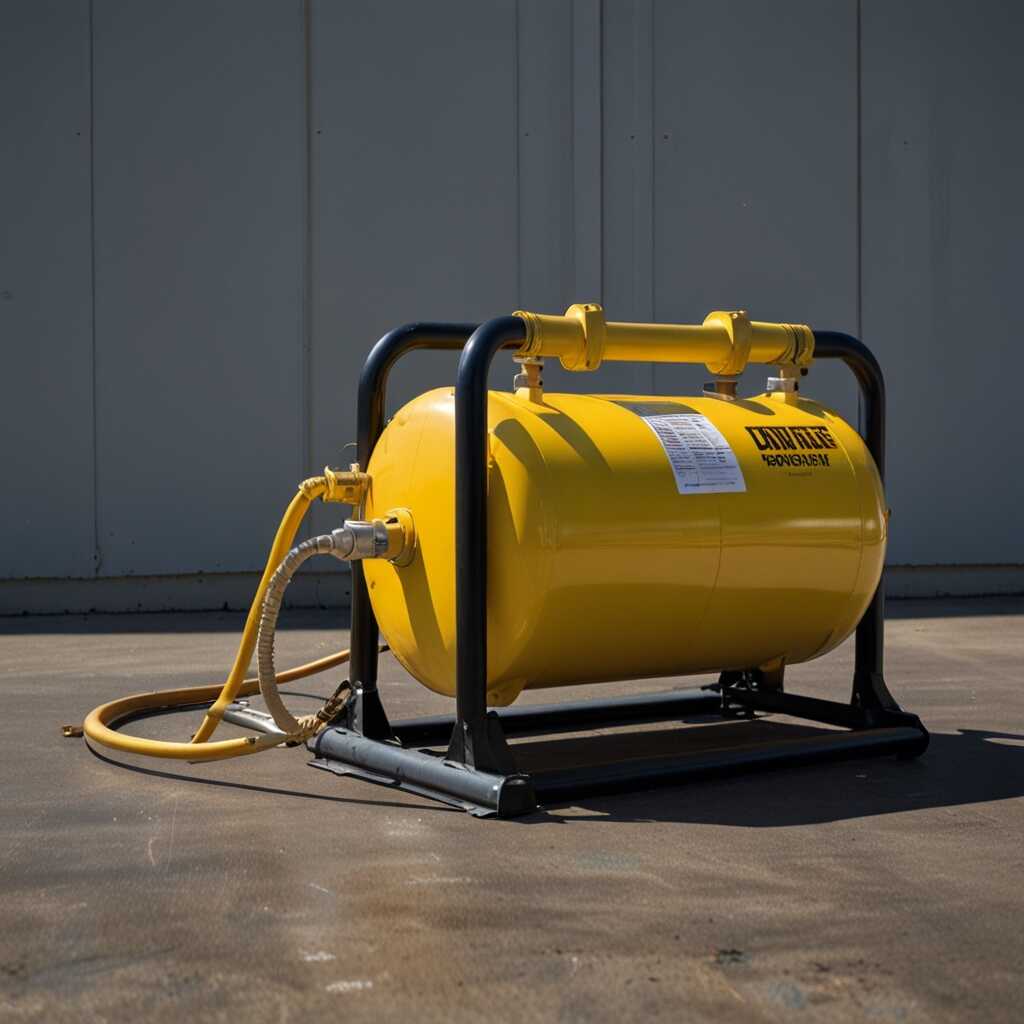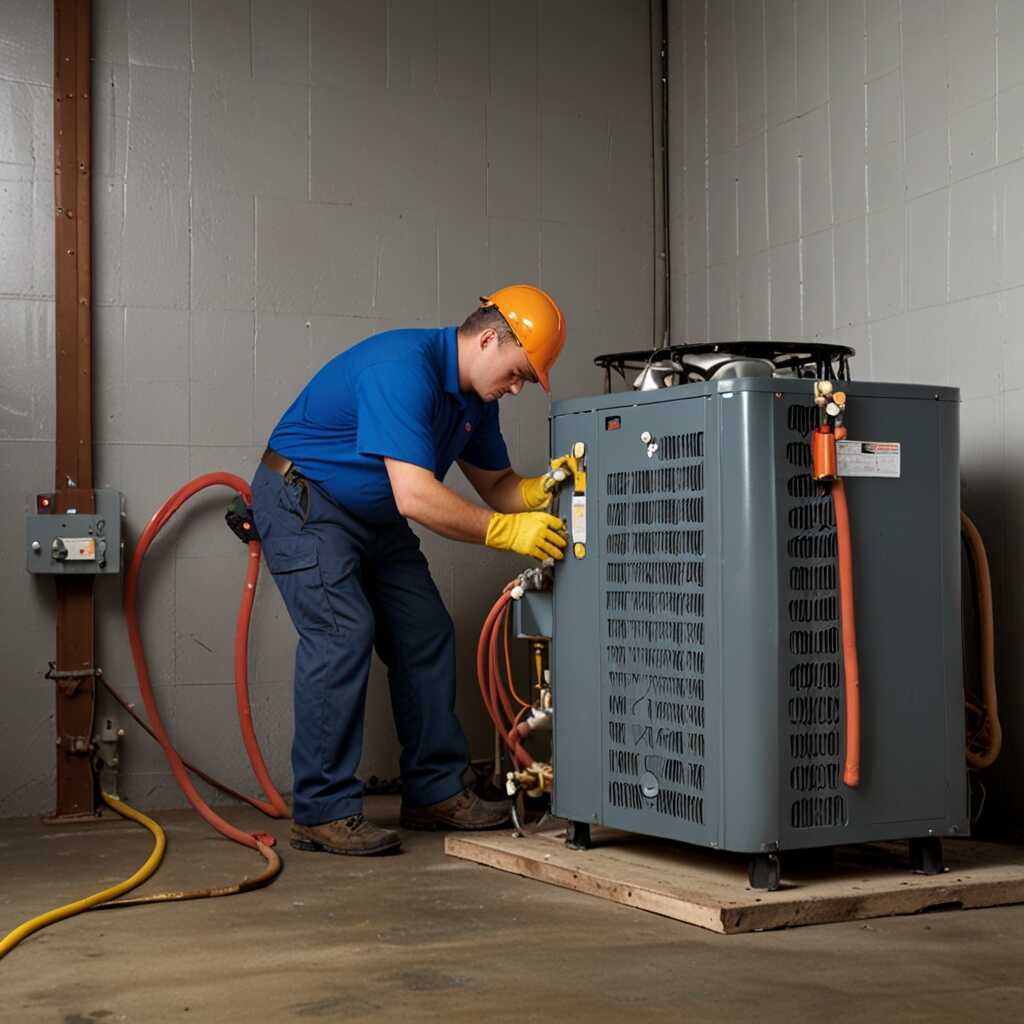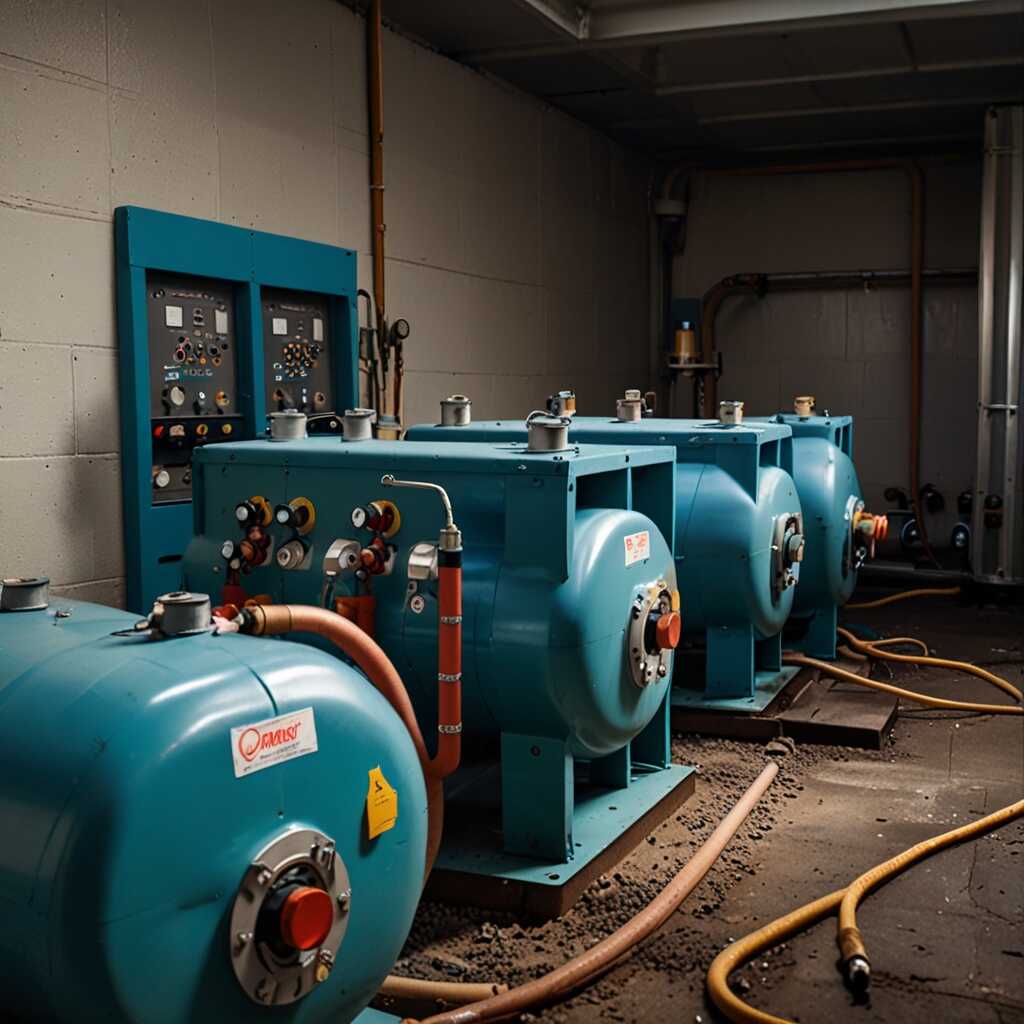Self-clearing check valves play a crucial role in preventing clogging in refrigerant recovery machines. These valves actively allow refrigerants to flow while clearing debris that may accumulate in the process. Understanding their function is essential for HVAC professionals to ensure efficient refrigerant recovery. At Refrigerant Recovery Pro, we provide valuable insights into these valves and how they enhance equipment reliability and performance.
Introduction to Refrigerant Recovery Machines and Their Efficiency
Refrigerant recovery machines play a crucial role in the HVAC industry by efficiently removing refrigerants from systems during maintenance or repairs. They work by creating a vacuum that safely extracts refrigerants, ensuring environmental compliance and safety. These machines enhance operational efficiency and reliability through various design features, particularly self-clearing check valves. These valves help prevent clogging and ensure a smooth recovery process, enhancing workflow and productivity. The average recovery rate of modern refrigerant recovery machines can reach up to 95%, making them essential for HVAC professionals.
Understanding the Impact of Self-Clearing Check Valves
Self-clearing check valves are designed to facilitate a continuous flow of refrigerant during the recovery process, preventing blockages. These valves utilize a mechanism that automatically clears debris or liquid refrigerant, allowing for uninterrupted operation. This function is vital in maintaining the operational efficiency of refrigerant recovery machines. By ensuring that refrigerant flows consistently, self-clearing check valves minimize downtime and maximize recovery rates. They are engineered to handle a wide range of refrigerant types, which is essential for HVAC technicians who manage diverse systems. The added durability and reliability of these valves enhance the performance of refrigerant recovery machines.
Common Clogging Issues Faced in Refrigerant Recovery
Clogging problems in refrigerant recovery machines often stem from debris, oil, and moisture. These elements can disrupt the recovery process, lowering efficiency and increasing recovery time. Affected machines may experience reduced performance and frequent malfunctions. HVAC professionals face these challenges regularly, as studies reveal that nearly 30% report grappling with clogging issues in their equipment. Self-clearing check valves are innovative solutions that help mitigate these problems, ensuring reliable performance and extending the lifespan of recovery machines.
Impacts of Clogging on Recovery Efficiency
Clogging issues significantly impact the efficiency of refrigerant recovery. When debris and contaminants obstruct flow, recovery rates drop, delaying the refrigerant extraction process. Recovery machines may struggle to maintain optimal pressure levels, which can lead to overheating and equipment wear. Self-clearing check valves are designed to eliminate accumulated debris automatically. This enhancement helps HVAC technicians achieve better efficiency and reliability in their refrigerant recovery processes. Regular maintenance supports these valves, ensuring they perform optimally, which can help technicians avoid costly downtime.

The Mechanics of Self-Clearing Check Valves in Recovery Machines
Self-clearing check valves are vital components in refrigerant recovery machines. They consist of a valve seat, a moving diaphragm, and a spring mechanism. These parts work together to prevent clogging during refrigerant recovery. The valve opens to allow refrigerant flow and closes to avoid reverse flow. When debris enters the valve, the diaphragm flexes, clearing it naturally. This process enhances the reliability of the refrigerant recovery system by reducing maintenance needs and downtime. Most valves used in these systems are compact, typically around 1-2 inches in diameter, to fit various machine designs.
Understanding Operational Principles of Self-Clearing Check Valves
The operational principles of self-clearing check valves ensure the efficient performance of refrigerant recovery machines. When liquid refrigerant passes through the valve, it creates pressure that lifts the diaphragm. This allows the refrigerant to flow into the recovery tank. During this process, if solid particles attempt to enter the valve, the diaphragm’s design enables it to flex and push these particles back out. Regular testing of this mechanism under various conditions has proven its effectiveness in clogging prevention. This reliability directly impacts the overall efficiency of refrigerant management practices for HVAC professionals.
Key Numerical Insights on Valve Functionality
- Self-clearing check valves can increase recovery efficiency by up to 30%.
- Valves generally operate effectively in temperatures ranging from -50°F to 150°F.
- Maintenance intervals for these valves are typically every 6 months.
- Many valves are designed to last for over 10,000 cycles before replacement.
- Effective valves can reduce clogging instances by as much as 90% during operations.
- A standard self-clearing check valve weighs around 0.5 to 1 pound.
- The internal mechanism allows debris clearance within 0.5 seconds after blockage detection.

Advantages of Implementing Self-Clearing Check Valves
Self-clearing check valves offer numerous benefits for refrigerant recovery systems. They enhance efficiency by preventing clogging, which allows for uninterrupted refrigerant flow during recovery. This design leads to reduced maintenance needs, as less frequent servicing is required to clear blockages. The result is a significant reduction in system downtime. Research indicates that systems utilizing these valves can achieve up to a 30% reduction in downtime compared to traditional systems.
Impact on System Reliability and Performance
The implementation of self-clearing check valves significantly enhances the reliability and performance of refrigerant recovery machines. These valves are designed to automatically allow any debris to exit the system without requiring manual intervention. This feature ensures that systems remain operational for longer periods without the risk of clogging. Regular performance testing has shown that systems equipped with self-clearing check valves maintain optimal refrigerant flow rates, improving overall recovery efficiency. Furthermore, these advancements help HVAC professionals and technicians maintain compliance with environmental regulations by ensuring effective refrigerant recovery.

Comparative Analysis of Standard and Self-Clearing Check Valves
Standard check valves typically utilize a static design that can become clogged with debris during refrigerant recovery. In contrast, self-clearing check valves are engineered with features that actively minimize blockages. These valves utilize dynamic mechanisms that flush out particles efficiently. For instance, when refrigerant flows through, a self-clearing valve can push sediment back into the system, preventing build-up. This means self-clearing models provide enhanced reliability and performance over traditional types. Additionally, manufacturer reviews confirm that self-clearing check valves can reduce clogging incidents by over 60%, greatly enhancing machine efficiency.
Advantages of Self-Clearing Check Valves in Refrigerant Recovery
Self-clearing check valves are specifically designed to efficiently handle the contaminants that typically cause clogging during refrigerant recovery. They incorporate advanced designs that ensure a continuous flow, making them highly effective in various operational conditions. The dynamic flushing action helps maintain steady refrigerant flow, improving overall machine efficiency significantly. For HVAC professionals, the choice of self-clearing over traditional check valves can lead to fewer service interruptions and lower maintenance costs. This choice can save technicians valuable time while ensuring a more reliable recovery process.
Advantages of Innovative Flow Control Mechanisms
- These valves reduce downtime, helping HVAC professionals complete recoveries faster.
- Self-clearing check valves minimize refrigerant waste, promoting environmental responsibility.
- They simplify machine maintenance, making it easier for technicians to operate devices.
- These valves prevent costly repairs associated with clogs in refrigerant recovery systems.
- They enhance the longevity of refrigerant recovery machines, saving money over time.
- Using these valves can improve the overall safety of refrigerant handling procedures.
- The design allows for smooth flow transitions, reducing pressure drops during operations.

Best Practices for Optimizing Refrigerant Recovery Systems
To enhance the performance of refrigerant recovery machines, follow key operational tips. Perform regular maintenance checks to ensure all components are functional. Use self-clearing check valves, as they prevent clogging during the recovery process, enabling uninterrupted operation. Ensure the recovery unit is properly connected with leak-free fittings to maximize the recovery rate. Follow temperature guidelines to ensure efficient refrigerant processing. In modern refrigerant recovery machines, the highest recovery rates can reach 3.0 pounds per minute or more, depending on the model.
Maximizing Operational Efficiency with Self-Clearing Check Valves
Self-clearing check valves play a crucial role in maximizing operational efficiency in refrigerant recovery systems. These valves are designed to prevent refrigerant from backing up into the system, minimizing the risk of clogging from contaminants. This feature not only improves the reliability of the recovery process but also enhances the overall performance of the machine. By enabling fast recovery without interruptions, self-clearing check valves help HVAC professionals complete tasks more efficiently. Incorporating these valves contributes to better refrigerant management and helps in meeting environmental compliance requirements.
Maintaining Refrigerant Recovery Equipment for Longevity
Maintenance of self-clearing check valves in refrigerant recovery machines ensures their reliability and efficiency. Regular inspections help identify wear and tear. Keeping the valves clean enhances performance and reduces clogging. Using appropriate lubricants can extend working life. Follow the manufacturer’s guidelines for maintenance schedules. Testing the valves periodically can help in detecting issues early. This approach leads to better machine efficiency and a longer lifespan of the equipment.
Essential Maintenance Tips for Check Valves
To maintain the reliability of self-clearing check valves, inspect them regularly for dirt and contaminants. Clean these valves with a suitable solution that won’t damage them. Check for any signs of wear, such as cracks or leaks, which can compromise performance. After maintenance, test the valves to ensure they function correctly. Using manufacturer-approved lubricants during assembly can also improve their lifespan. These essential practices enhance the overall efficiency of refrigerant recovery machines.
Understanding User Profiles and Industry Applications
- HVAC technicians benefit from learning effective ways to manage refrigerant flows.
- Refrigeration maintenance managers need reliable equipment to ensure system efficiency.
- Environmental compliance officers seek methods to reduce refrigerant leaks and waste.
- Engineering students studying HVAC design explore the mechanics of these valves.
- Service contractors enhance their knowledge base with insights on clog prevention.
- Large commercial properties require robust systems for managing refrigerant recovery.
- Manufacturers of cooling systems often explore technical details to improve device designs.
Emerging Trends in Refrigerant Recovery Technology
Recent innovations in refrigerant recovery technology include self-clearing check valves and advanced refrigerant management systems. These advancements enhance efficiency and reliability, addressing clogging issues that many technicians face. Valve technology innovations play a crucial role in ensuring smoother recovery processes. This is essential for HVAC professionals looking to optimize performance during refrigerant management. Studies predict that 60% of HVAC professionals will adopt new refrigerant recovery technologies by 2025, reflecting a growing trend in the industry.
Specific Innovations in Valve Technology
Specific advancements in valve technology include the development of self-clearing mechanisms. These innovations help prevent clogging and enhance the reliability of refrigerant recovery machines. Self-clearing check valves can handle varying flow rates and pressures, offering durability and improved performance. They undergo rigorous testing to ensure they meet industry standards. Innovative features increase user comfort by simplifying maintenance tasks. As manufacturers focus on efficiency improvements, these valves deliver results that align with the needs of modern HVAC systems. Understanding these developments is essential for HVAC professionals navigating the evolving refrigerant recovery landscape.